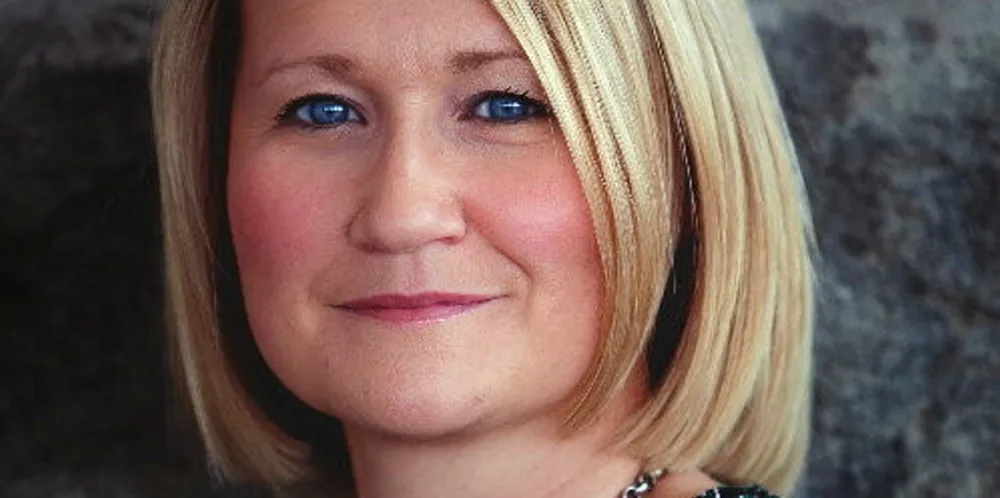‘Frustrating’ seeing green power stuck in permitting queue: Amazon energy chief
Lindsay McQuade, EMEA energy director for the world’s number one corporate buyer of renewable power, talks cutting through red tape, PPAs, AI and more

Amazon’s head of energy in Europe has spoken about her frustrations at seeing 80GW of wind power stuck in a permitting pipeline, why the energy system should not fear the demands of AI, and why she believes the tech giant helps rather than hinders grid operations.
Lindsay McQuade is the director of energy for Europe, Middle East and Africa (EMEA) at Amazon, which she joined last year after working as CEO of ScottishPower Renewables, a subsidiary of Spain’s Iberdrola.
That includes a goal of powering its operations with 100% green energy by 2025, just 14 months from now – a target that was moved forward from 2030.
The hope is that could help unblock a “good chunk” of the wind projects that are stuck waiting for permits, said McQuade.
“Europe has got fantastic resource,” she said, along with “some of the best market frameworks,” an established supply chain and an experienced labour market for renewable energy.
“We need to really capitalise on that,” said McQuade. “And when I say ‘we,’ I mean as a European.”
Green PPAs gaining ground
Because of the lack of green energy available through the grid, and its own net zero targets, Amazon was one of the early movers when it came to signing power purchase agreements (PPAs) with renewable energy companies.
McQuade said the shortage of green power options is “symptomatic of a system that isn’t as efficient as it needs to be.”
Renewable assets were “sitting waiting to be built" as they couldn't find a route to market through government-backed options or mechanisms, said McQuade.
In that environment, PPAs were she said a model that Amazon could "lean into".
McQuade recalled she was “on the other side of one of Amazon’s first PPAs” while at ScottishPower, “which was awesome to be part of because that was the first PPA that my old organisation had entered into as well.”
“Digitalisation of pretty much everything we’re doing these days” – whether that is the home, business or transport – “is going to become an increasing trend of modern life,” said McQuade.
“We’re really at the tip of the iceberg,” perhaps as little as 10%, when it comes to seeing the potential of the Cloud's penetration into IT truly realised, she said.
That pace of innovation, including in the green energy sector, can she said be “hugely accelerated” through artificial intelligence and machine learning (ML).
“That then has an implication in terms of the energy that’s then required to power those models and power that AI and ML thinking."
There have been concerns that the huge demands of AI could put extra strain on the energy system and potentially gobble up a sizable chunk of the green power on offer.
McQuade said that the growth of AI and ML will inevitably see an increase in power used, but Amazon is less concerned about this increase and more focused on making "every megawatt hour that we’re going to use as efficient as possible."
“This data is currently lying there underutilised, untapped, and that could be a major missed opportunity," she said. "It could set us back if we don’t take it forward.”
AI and ML should she said be “viewed as tools for good" in helping unlock this potential.
‘Symbiotic relationship’ with grid
Much of Amazon’s energy demand is accounted for by its subsidiary Amazon Web Services (AWS), which reportedly owns around half of the world’s cloud computing infrastructure market.
Hyperscale data centres, including those used by AWS, often need between 20MW and 40MW of power, although the largest ones use over 100MW, enough to power 80,000 homes in the US.
McQuade stressed that AWS has a “distributed network,” operating its more than 100 data centres from 32 geographic regions the world over to try and help spread their energy demand.
The company has to recognise that “as a service provider to customers” it would be impossible for it to then “dominate a grid,” she said. “We can’t do that.”
“It should never be the case that one industry is dominating a system.”
“We need to partner with the grid,” she said. “We are supporting effective grid operations in some of the regions in which we operate by providing backup services, by helping the grid operator manage the grid.”
The company can also reduce its own demand and rely on backup power if asked to, she said.
“It’s a symbiotic relationship. We need the power to come from the grid. But similarly all of our customers need us to be able to perform on a 24/7 basis.”
(Copyright)